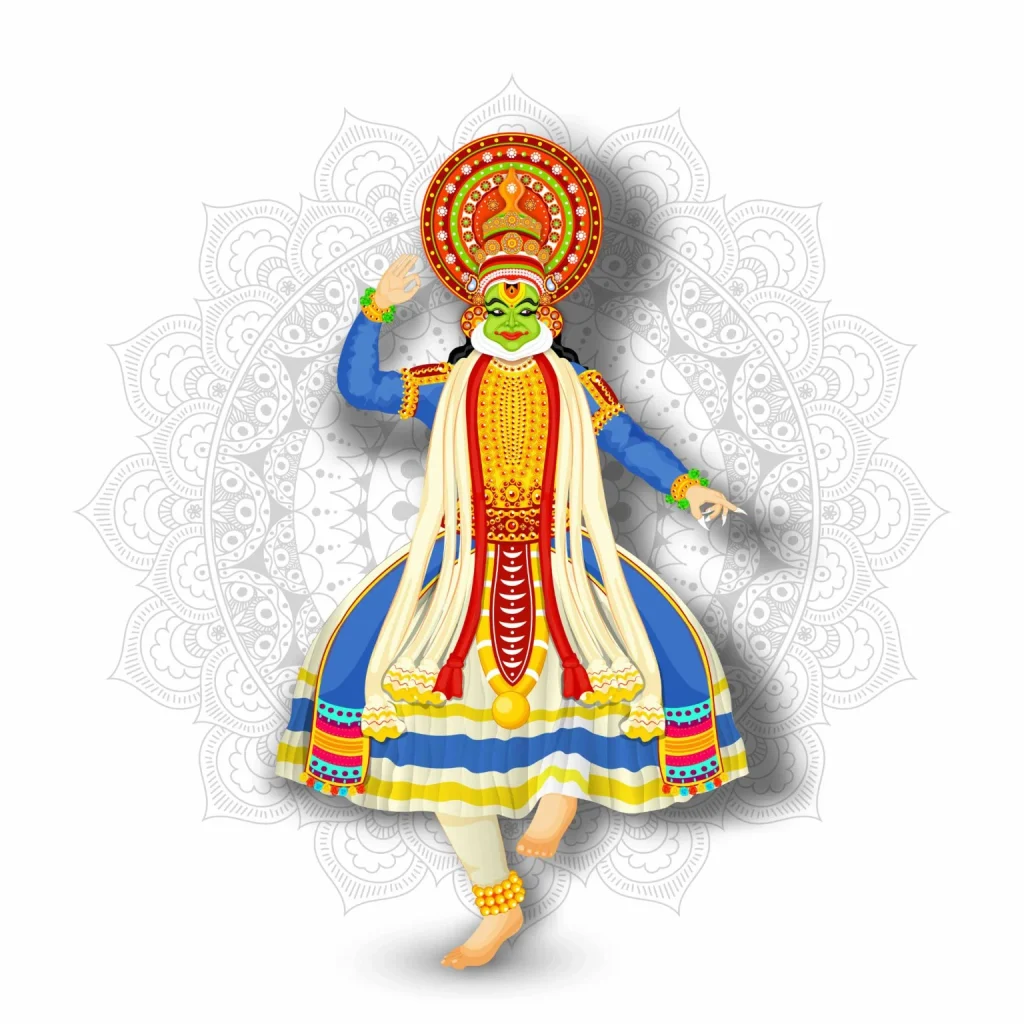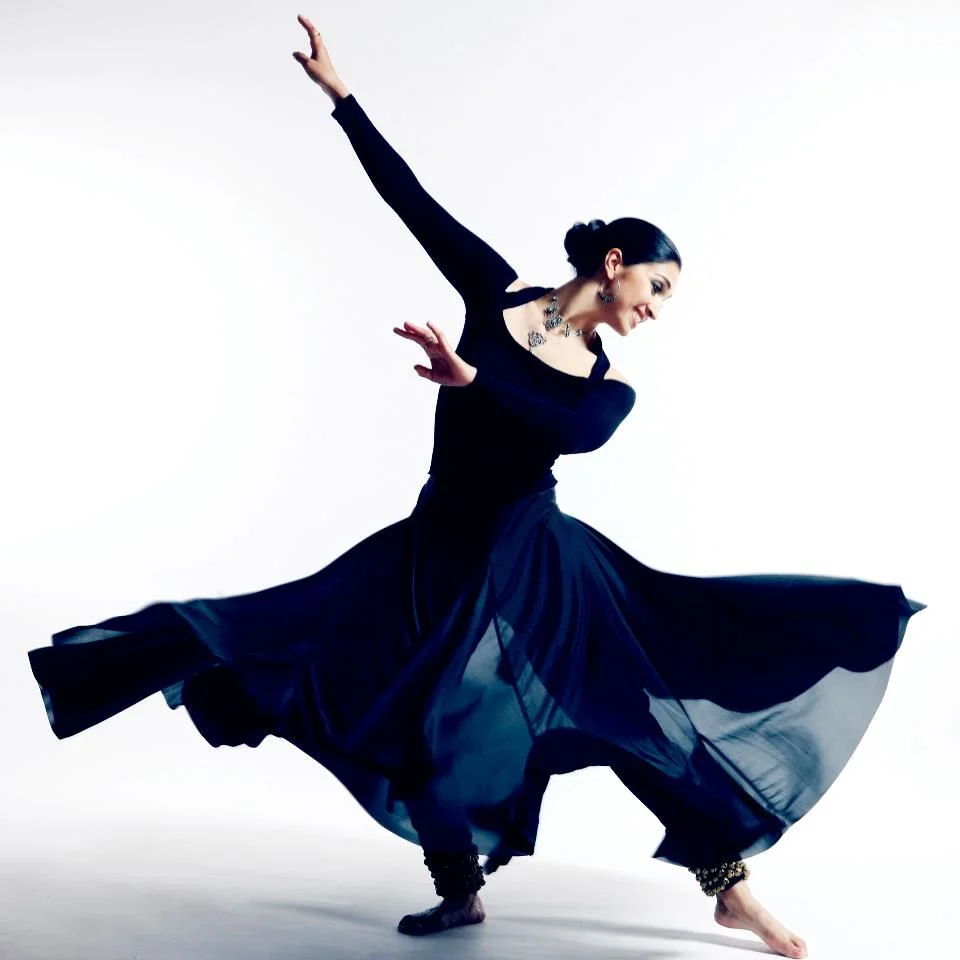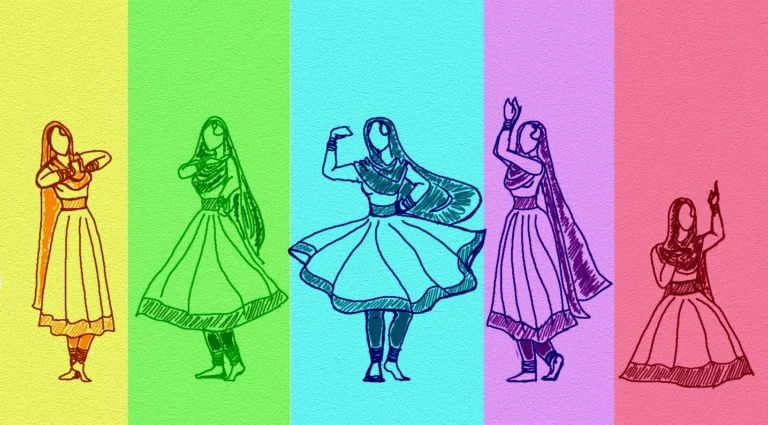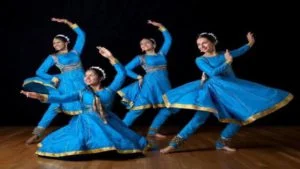Take a plunge into the graceful world of Kathak by knowing more about 7 Kathak Levels.
- Introduction to Kathak
- 7 Kathak Levels
- Kathak Level 1 – Prarambhik (8 months to 1 year)
- Kathak Level 2 – Praveshika Pratham (around 1 year)
- Kathak Level 3 – Praveshika Purna (1 year)
- Kathak Level 4 – Madhyama Pratham (1 year)
- Kathak Level 5 – Madhyama Purna (1 year)
- Kathak Level 6 - Visharad Pratham (1.5 to 2 years)
- Kathak Level 7 - Visharad Purna (1.5 to 2 years)
Introduction to Kathak
Kathak is an exquisite and graceful Indian classical dance form that is adorned by a plethora of hand movements, extensive footwork, and flawless facial expressions. It finds its origin in the culture of travelling bards or Kathakaars meaning ones who tell a story.
Initially, this art of dance was used for amplifying the bhakti traditions but later on its knowledge spread to the other parts of India and it began to be performed in Mughal courts as well.
One striking feature of Kathak is that it offers a space for both Hindu and Muslim variations of it. However, in Hindu tradition Kathak was mostly used to convey the anecdotes of Lord Krishna and Radha while in Muslim tradition it was moulded into a love-inspired, amorous, and romantic dance form which was meant for entertainment purposes.

In present-day we have three Gharanas of Kathakaars notably in Jaipur, Banaras, and Lucknow whereby the former focuses on foot movements more and the latter two on facial expressions and movements of the hand.
Kathak is an art form that is not limited to any age barrier. Generally, students can start learning at the age of 7 but one can learn it anytime starting from zero.
7 Kathak Levels
The 7 Kathak Levels are discussed in great length below. So, dive into this glorious knowledge of Kathak.
Kathak Level 1 – Prarambhik (8 months to 1 year)
As the name suggests this first kathak level teaches the basic and elementary knowledge about Kathak. It is the stepping stone on which this graceful journey lies. At this level topics such as Teentaal are introduced to the students.
Also, information relevant to the contemporary and historical significance is provided such as about Kathak dance institutions, famous gurus and personalities, etc. In practical one is taught how to recite the compositions properly as well as asked to perform the Tatkaar, Tihaai’s along with several Layas and how to manifest them in single, double, and quadruple times.
It takes around 8 months to 1 complete year to pass this level.
Kathak Level 2 – Praveshika Pratham (around 1 year)
This kathak level begins the elementary knowledge of Kathak in a deeper context and it is also known as the first level of elementary Kathak education. It builds whatever the previous level taught as it teaches several other variations in Teentaal, as well as two new kinds of Tals, are introduced in this one.
The students at this level are made to learn about the names of various Kathak gurus and teaches a variety of hand gestures inspired by the text ‘Abhinav Darpan’. This level lays its focus in teaching Rangmanch Pranam, two that, Todas, etc. It teaches the important Abhinay Geet or song whereby lyrics take the central-stage.
Kathak Level 3 – Praveshika Purna (1 year)
In the 3rd year, the elementary Kathak knowledge will be fully delivered and accomplished. As theory or information goes hand in hand with practical performance knowledge this level witnesses a proper theory exam along with the practical one.
This kathak level tries to make students well-versed in the 18 prominent hand gestures as well as involves the case studies of well-known Kathak artists and contemporary tabla players.
The course of this Kathak level is jam-packed with two that, 1 Rangmnch Pranam, 4 Todas, etc and teaches the performance of mythological scenes like Radha going to the river bank, incidents of Krishna Leela, etc.
Kathak Level 4 – Madhyama Pratham (1 year)
The Madhyama Pratham level of Kathak is also considered equivalent to the first level of diploma. This is an intermediate kathak level whereby it is expected that those who reached this level have a strong grip over the basics of Kathak.
The primary skill taught at this level is that of hand gestures and movements as well as information regarding the several Gharanas. Specific movements of magnificence such as Jhoomar and Talai hold importance combined with types of the lifting of the earthen pot, stealing of butter, and various other expressions.
In theory, the biographies of Kathak exponents such as pandit Bindadin Maharaj, Pandit Hanuman Prasad, Meera, etc are introduced to students in order to make them understand the legendary personalities who left a benchmark for their successors to follow.
Kathak Level 5 – Madhyama Purna (1 year)
This level offers the same topics which were taught in the previous level but in great depth and also provides room for considerate practice which makes an individual master of a skill. Having spent a lot of time learning Kathak, this level, when compared to other kathak levels, with its course structure transform one into a well-trained Kathak practitioner by honing their skills.
Also, it teaches the prestigious Shri Shiv Vandana or Shri Krishna Vandana. By the end of this kathak level, the students are made capable of reciting all the lyrics or Bols while they are performing the Taals.
After the critical learning experience throughout the level, students are required to present a Hori with full emotional expressions as a token of qualification.
Kathak Level 6 - Visharad Pratham (1.5 to 2 years)
Once the students successfully attain all the elementary and intermediate kathak knowledge and performing skills they are made to progress to the advanced level which is equivalent to a bachelor’s or BA degree. This level provides an opportunity for the students to perform in a concertlike setting for almost an hour or so. It is a bedrock for all the real-life performances one would undertake. All the incarnations of the Hindu god Vishnu in a well-curated manner is taught to them with specific expressions and moods.
Kathak Level 7 - Visharad Purna (1.5 to 2 years)
This is the final level of all the kathak levels which is equated as the final degree of BA as after completion of this one a Kathak student comes out to be a well-versed performer and choreographer.
They are expected to have immense knowledge regarding the 9 Rasas and should be capable of making stage their best friend as from here their real kathak journey begins as a performer.
This syllabus polishes the entire theoretical and practical knowledge required during the previous kathak levels by sprinkling intricate details to its course structure. After going through all thesekathak levels one is able to find themselves as a fine dancer and Kathak practitioner.
Share with your friends





